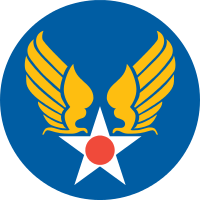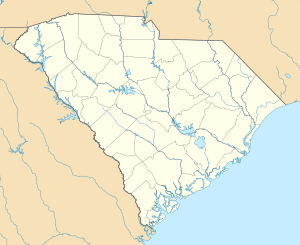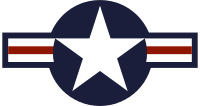South Carolina World War II Army Airfields
South Carolina World War II Army Airfields | |
|---|---|
| Part of World War II | |
 Map Of Major South Carolina World War II Army Airfields | |
| Type | Army Airfields |
| Site history | |
| Built | 1940-1944 |
| In use | 1940-present |
During World War II, the United States Army Air Forces (USAAF) established numerous airfields in South Carolina for antisubmarine defense in the Gulf of Mexico and for training pilots and aircrews of USAAF fighters and bombers.
Most of these airfields were under the command of Third Air Force or the Army Air Forces Training Command (AAFTC) (A predecessor of the current-day United States Air Force Air Education and Training Command). However the other USAAF support commands (Air Technical Service Command (ATSC) and Air Transport Command (ATC) maintained a large base in Charleston.
It is still possible to find remnants of these wartime airfields. Many were converted into municipal airports, some were returned to agriculture and several were retained as United States Air Force installations and were front-line bases during the Cold War. Hundreds of the temporary buildings that were used survive today, and are being used for other purposes.
Major Airfields
Multiple Commands
- Charleston Army Airfield, 10.6 miles (17.1 km) northwest of Charleston
- 421st Base HQ and Air Base Squadron
- Initially: Air Technical Service Command (29th Air Base Group, Distribution Point #2)
- Also used by: Army Air Forces Antisubmarine Command (16th Antisubmarine Squadron)
- Later: Transferred to: First Air Force (113th AAF Base Unit)
- Later: Transferred to: Air Transport Command (593d AAF Base Unit)
- Later: Charleston Air Force Base (1952-2010)
- Now:
 Joint Base Charleston (2010-Present) (IATA: CHS, ICAO: KCHS, FAA LID: CHS)
Joint Base Charleston (2010-Present) (IATA: CHS, ICAO: KCHS, FAA LID: CHS)
Third Air Force
|
|
AAF Training Command
Eastern Flight Training Center
- Shaw Army Airfield, 8.4 miles (13.5 km) west-northwest of Sumter
- Army Air Force Flying School (Basic)
- Known sub-bases and auxiliaries
- Burt Gin Auxiliary Field
- Rembert Auxiliary Field
- Monaghan Auxiliary Field
- Sumter Municipal Airport
- Now:
 Shaw Air Force Base (IATA: SSC, ICAO: KSSC, FAA LID: SSC)
Shaw Air Force Base (IATA: SSC, ICAO: KSSC, FAA LID: SSC)
AAF Contract Flying Schools
|
|
Minor Airfields
|
|
References
![]() This article incorporates public domain material from the Air Force Historical Research Agency website http://www.afhra.af.mil/.
This article incorporates public domain material from the Air Force Historical Research Agency website http://www.afhra.af.mil/.
- Maurer, Maurer (1983). Air Force Combat Units Of World War II. Maxwell AFB, Alabama: Office of Air Force History. ISBN 0-89201-092-4.
- Ravenstein, Charles A. (1984). Air Force Combat Wings Lineage and Honors Histories 1947-1977. Maxwell AFB, Alabama: Office of Air Force History. ISBN 0-912799-12-9.
- Thole, Lou (1999), Forgotten Fields of America : World War II Bases and Training, Then and Now - Vol. 2. Pictorial Histories Pub . ISBN 1-57510-051-7
- Military Airfields in World War II - South Carolina

.jpg)
.svg.png)